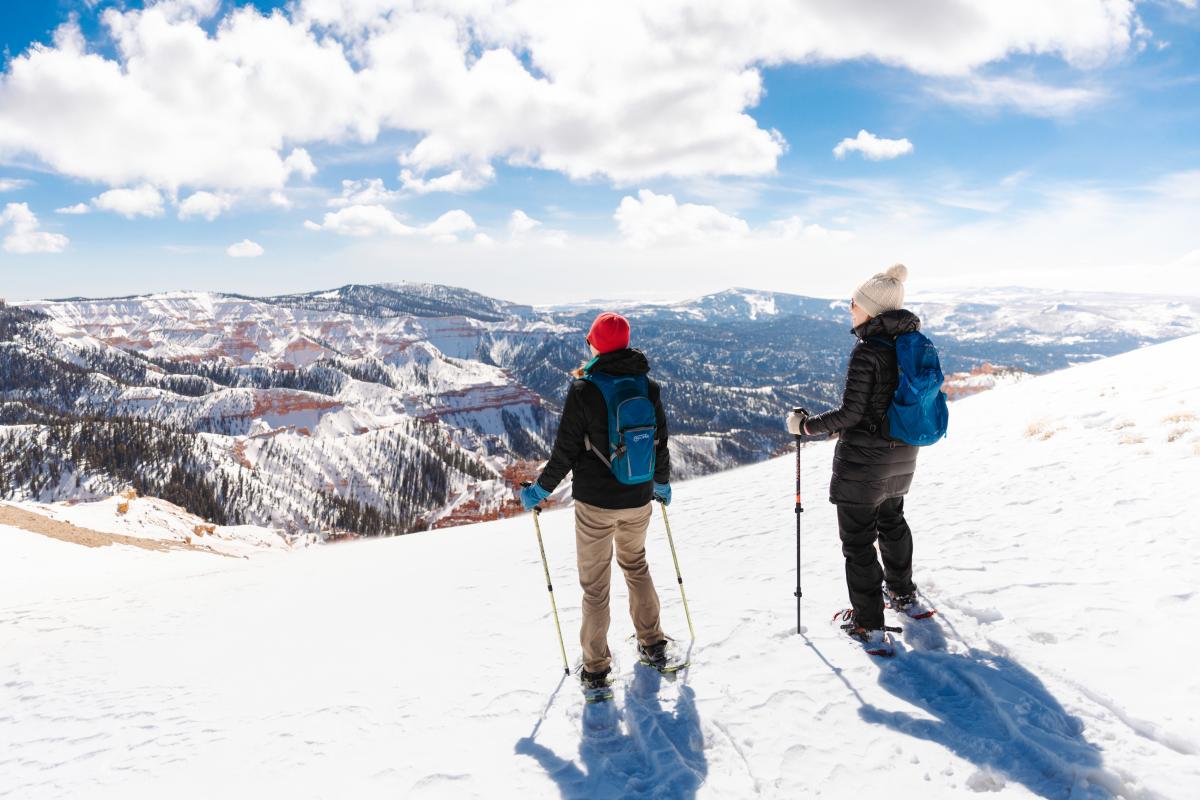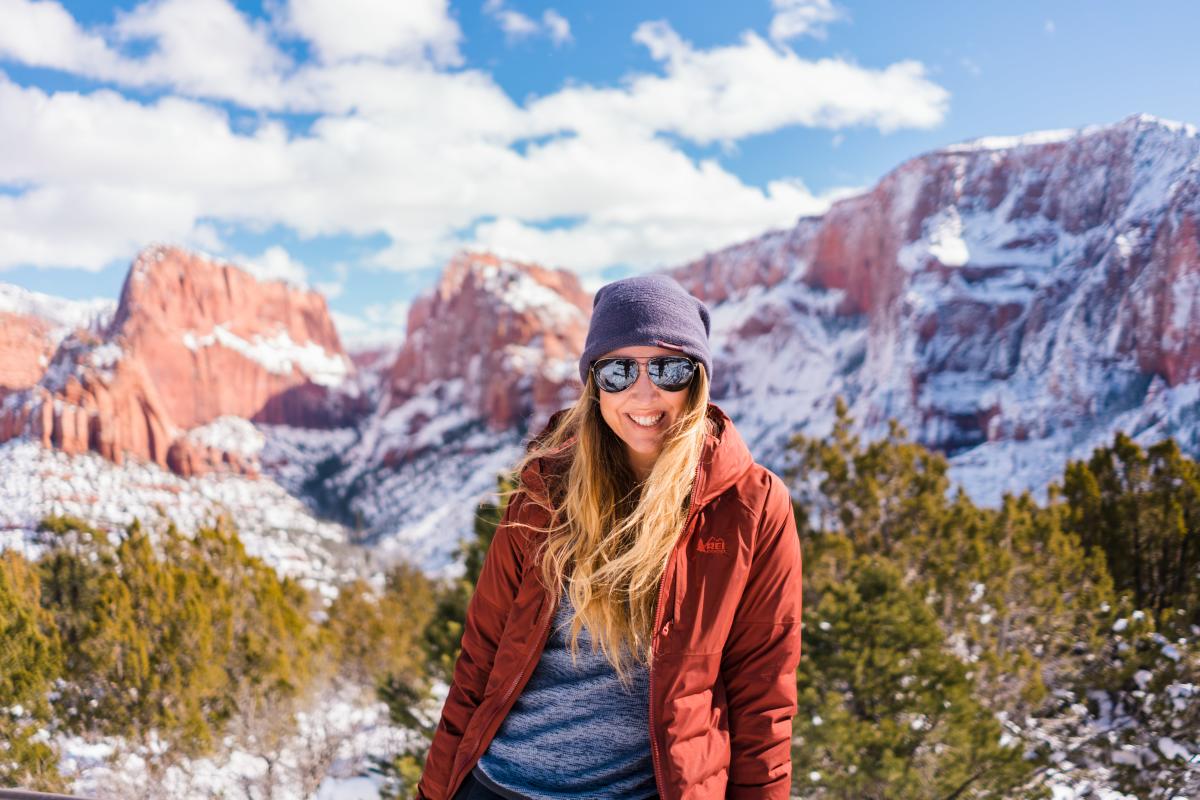These parks include Bryce Canyon National Park, Cedar Breaks National Monument, Kolob Canyons (North Zion National Park), and Zion National Park.
Visiting Cedar Breaks National Monument in Winter
This giant red rock amphitheater sits high atop the Markagunt Plateau and is over 2,500 feet deep and more than three miles across. The spectacular colors of Cedar Breaks National Monument dusted with a little snow make it an incredible site. One that we love in any season, but especially winter. There's something other-worldly about standing at the rim of this spectacular monument amidst meadows quieted by snow. The faint glitter of snow on the intricate formations gives it just a little oomph, and the journey there is always exciting.
Plan Ahead:
- Hwy 148 is CLOSED in winter and cannot be accessed.
- There is a Visitor Contact Station at the North Overlook where groups should meet for winter snowshoe activities and dark sky parties.
- All other viewpoints will require a snowmobile, snowshoes, or x-country skis to access.
- Guided snowshoe hikes are held on weekends, more information can be found at nps.gov/cebr/
- Guided snowmobile tours can be booked with a local guide at brianheadthunder.com

Visiting Zion National Park in Winter
A beautiful geological showpiece of sandstone cliffs (among the highest in the world) Zion is home to a large diverse animal and plant community as well as beautiful views! And there's a unique experience in walking the scenic trails of the park, quieted beneath a blanket of snow. Typical winter activities in Zion National Park include scenic drives, bicycling, and hiking. While many trails are OPEN in winter, some will close due to ice and poor conditions. Proper footwear with traction devices are recommended and if you plan to hike The Narrows prepare with proper gear (like a drysuit) because it will be cold!
How To Get There in Winter From Cedar City: Take I-15 southbound to Exit 16. From there take Hwy 9 through Zion National Park.
Find current park conditions, road conditions, closures, and more HERE.
The Zion National Park shuttle service is NOT in operation from January 2nd to March 10th.

Visiting Bryce Canyon National Park in Winter
Stunning red rock formations and sweeping views covered in snow make for an absolutely magical experience in southern Utah. With a winter visit to Bryce Canyon, you may not be able to hike every trail, and the experience will be different, but oh so worth it! Typical winter activities in Bryce Canyon include hiking, snowshoeing, cross-country skiing, winter backpacking, and winter astronomy. You can find more information about these activities (as well as rentals and guides) using the link included HERE.
How to Get There in Winter From Cedar City: Take I-15 northbound to exit 95. From there take Hwy 20 to the town of Panguitch. From Panguitch follow Hwy 89 to Bryce Canyon National Park.
Find current park conditions, road conditions, closures, and more HERE.

Visiting Kolob Canyons (North Zion National Park) in Winter
The lesser-known side of Zion National Park, Kolob Canyons is typically less traveled, but no less spectacular! The Canyon is shaped in rugged sandstone cast against green forests and in winter the crimson stone takes on a different look beneath a dusting of snow. Winter activities in Kolob Canyons include scenic drives, hiking, and snowshoeing. While all trails in Kolob Canyons remain open, snowshoes or traction devices will be necessary depending on the snowpack. The scenic drive is open when available.
How to Get There in Winter From Cedar City: Take I-15 southbound to Exit 40. The Kolob Canyon Visitor Center is visible immediately.
Be sure to check road conditions and closures before setting off.

As National Parks, passes, or day-use fees are required for entrance.
